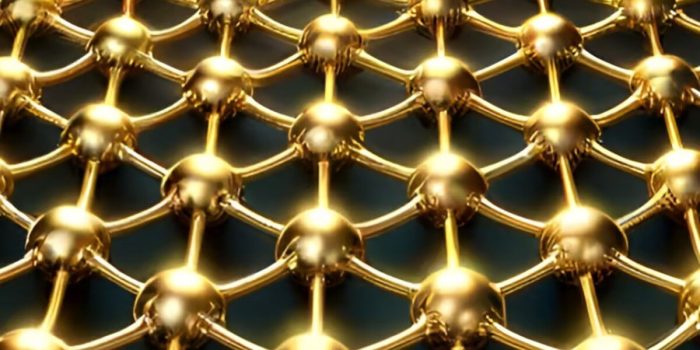Goldene, a recently developed two-dimensional sheet of gold, has emerged as a potential rival to graphene, the reigning wonder material. While graphene has long captured attention for its remarkable properties like strength, flexibility, and conductivity, goldene brings its own unique characteristics to the table.
Graphene’s dominance in materials science stemmed from its exceptional qualities, derived from its one-atom-thick structure peeled from graphite. However, as its fame grew, so did the saturation of its presence in both news headlines and practical applications. Thus, the emergence of goldene offers a refreshing alternative.

Researchers at Linköping University in Sweden pioneered the creation of goldene by ingeniously manipulating gold atoms to form a single-atom-thick layer. Unlike bulk gold, goldene exhibits semiconductor properties due to the two “free bonds” of its atoms in the 2D configuration. This opens up possibilities for applications in catalysis, electronics, and water purification.
Creating goldene presented challenges, primarily stemming from gold atoms’ tendency to aggregate rather than form a flat, two-dimensional structure. The research team devised a method involving sandwiching thin layers of silicon between titanium and carbide, then coating them with gold. By heating this sandwich, the silicon layer was replaced by gold.

Extraction of the goldene from the sandwich was another hurdle, requiring the use of Murakami’s reagent, a chemical known for its role in an ancient Japanese blacksmithing technique. After months of careful treatment, the goldene was exposed and stabilized using a surfactant.
Despite these achievements, the journey for goldene has just begun. Researchers plan to delve deeper into its properties, explore potential applications, and investigate the feasibility of flattening other precious metals into two-dimensional forms.
Goldene’s emergence marks a significant development in the realm of materials science, offering a promising alternative to graphene and opening doors to novel technological advancements. As research progresses, the true extent of goldene’s capabilities and its impact on various industries will undoubtedly unfold, shaping the future of materials engineering.


